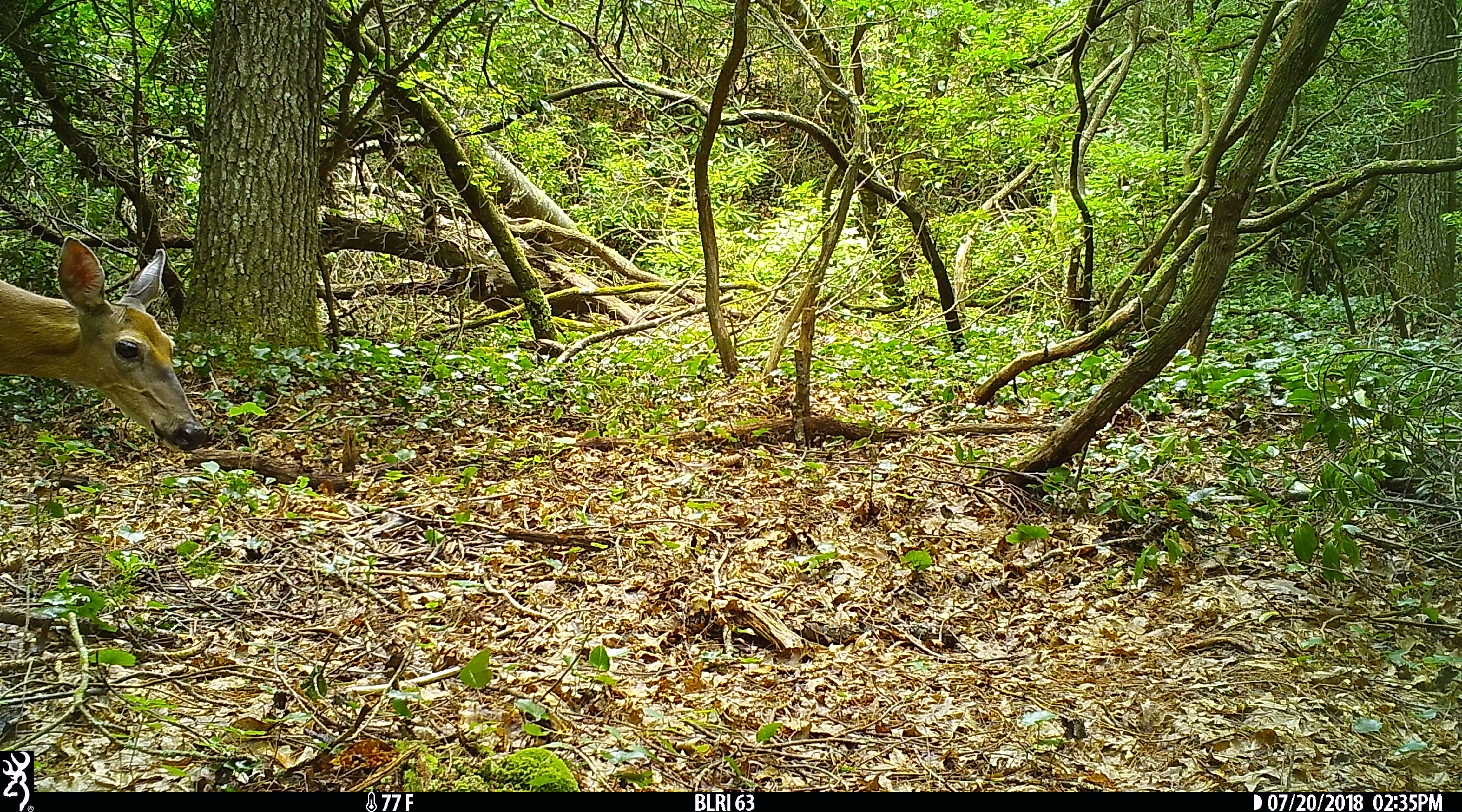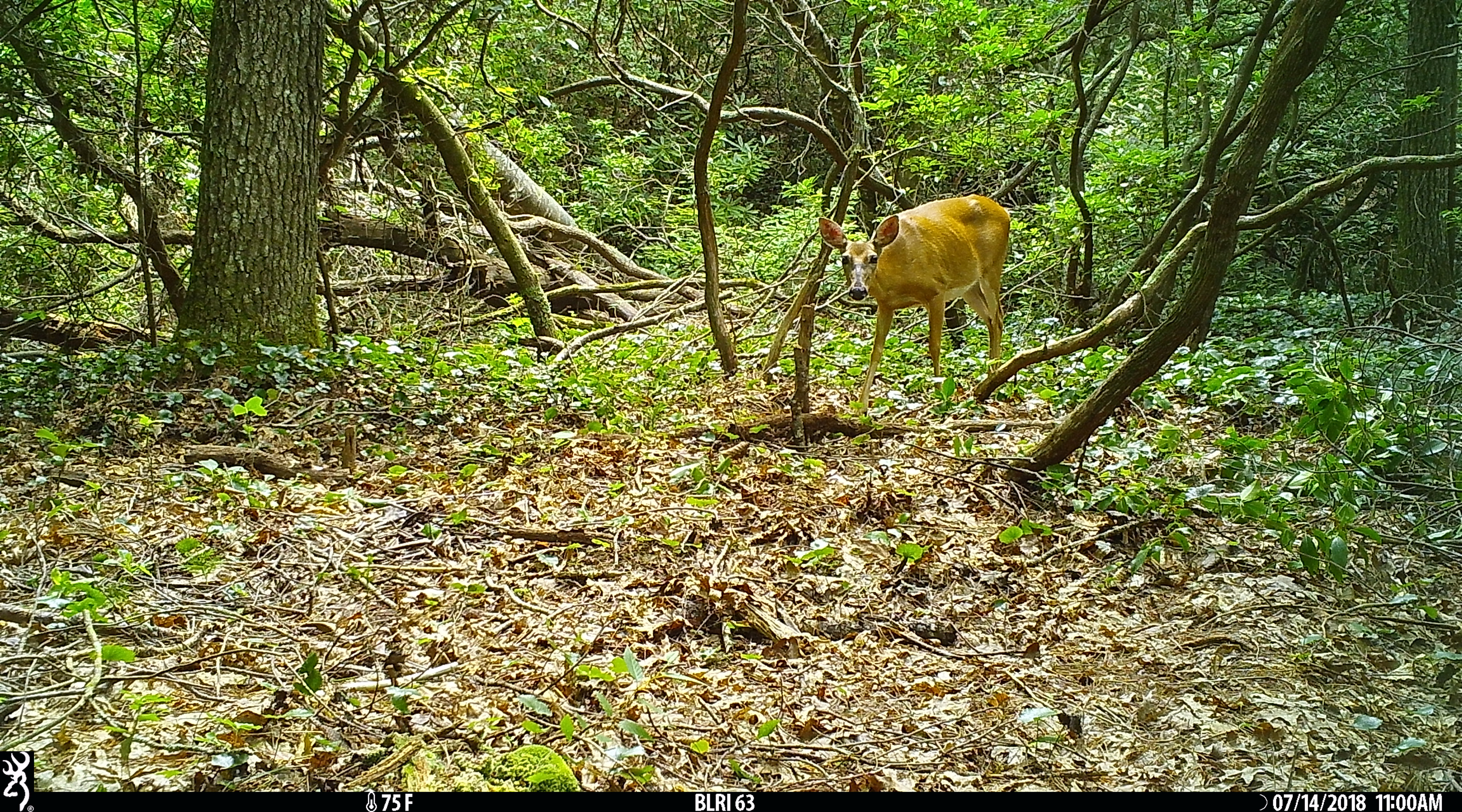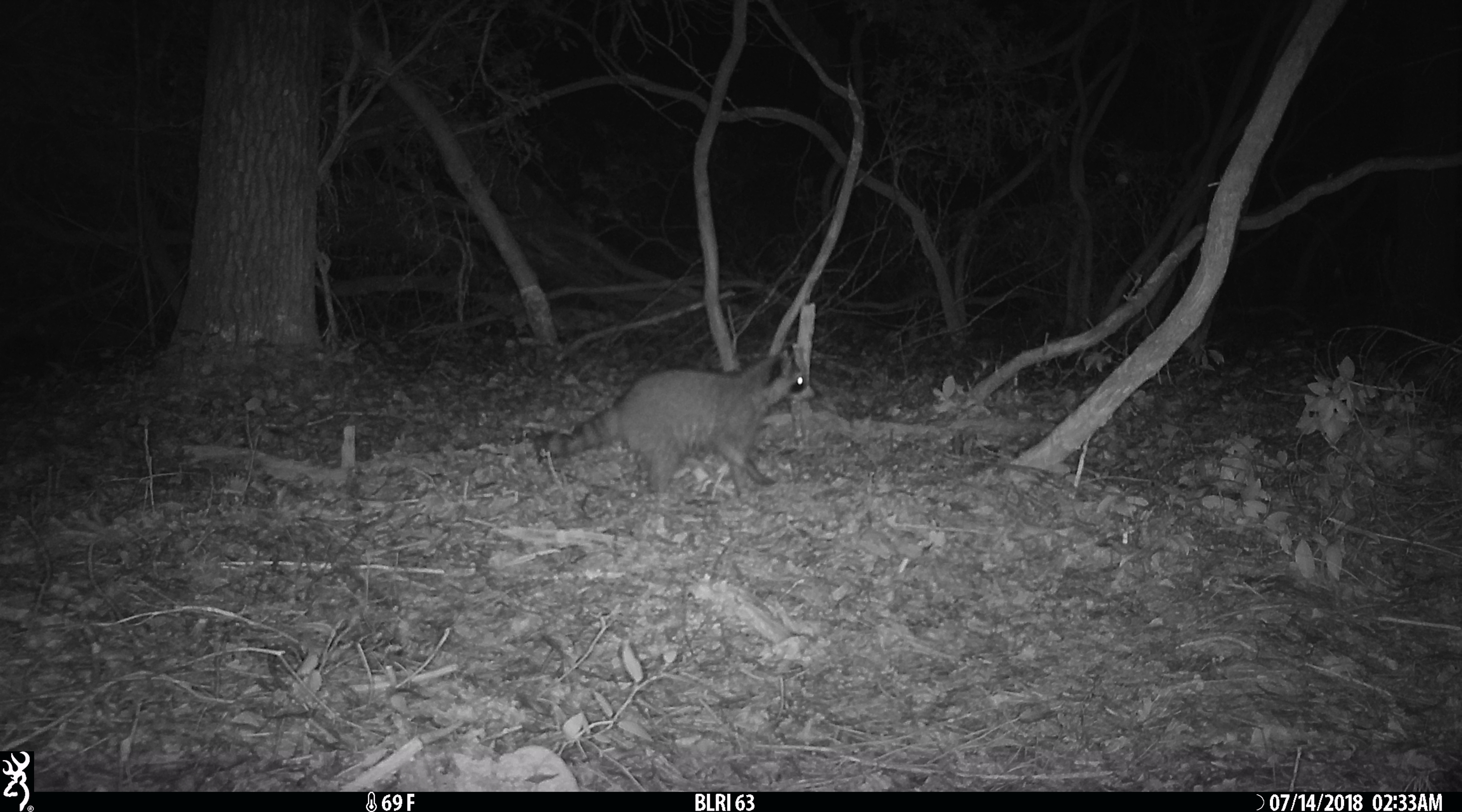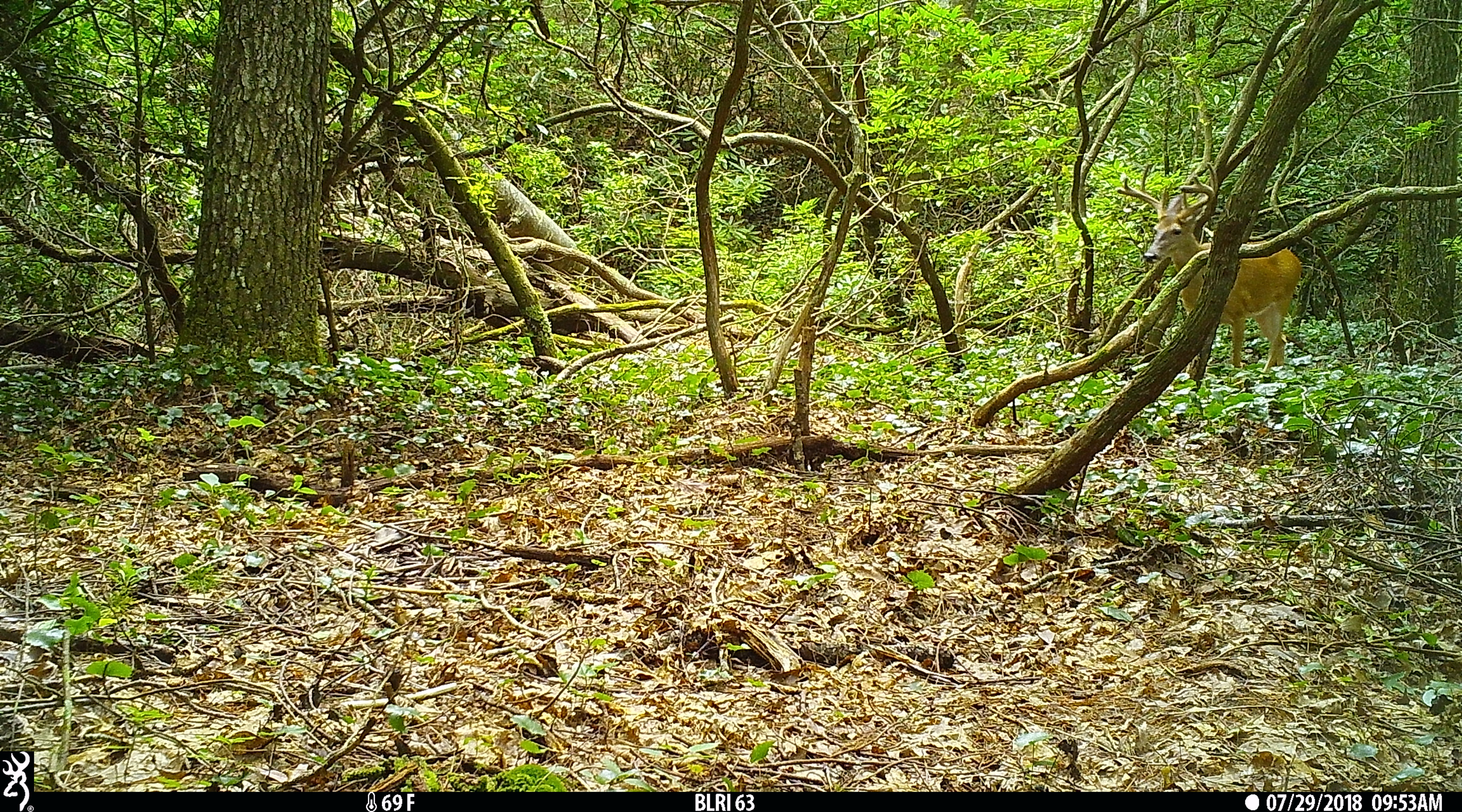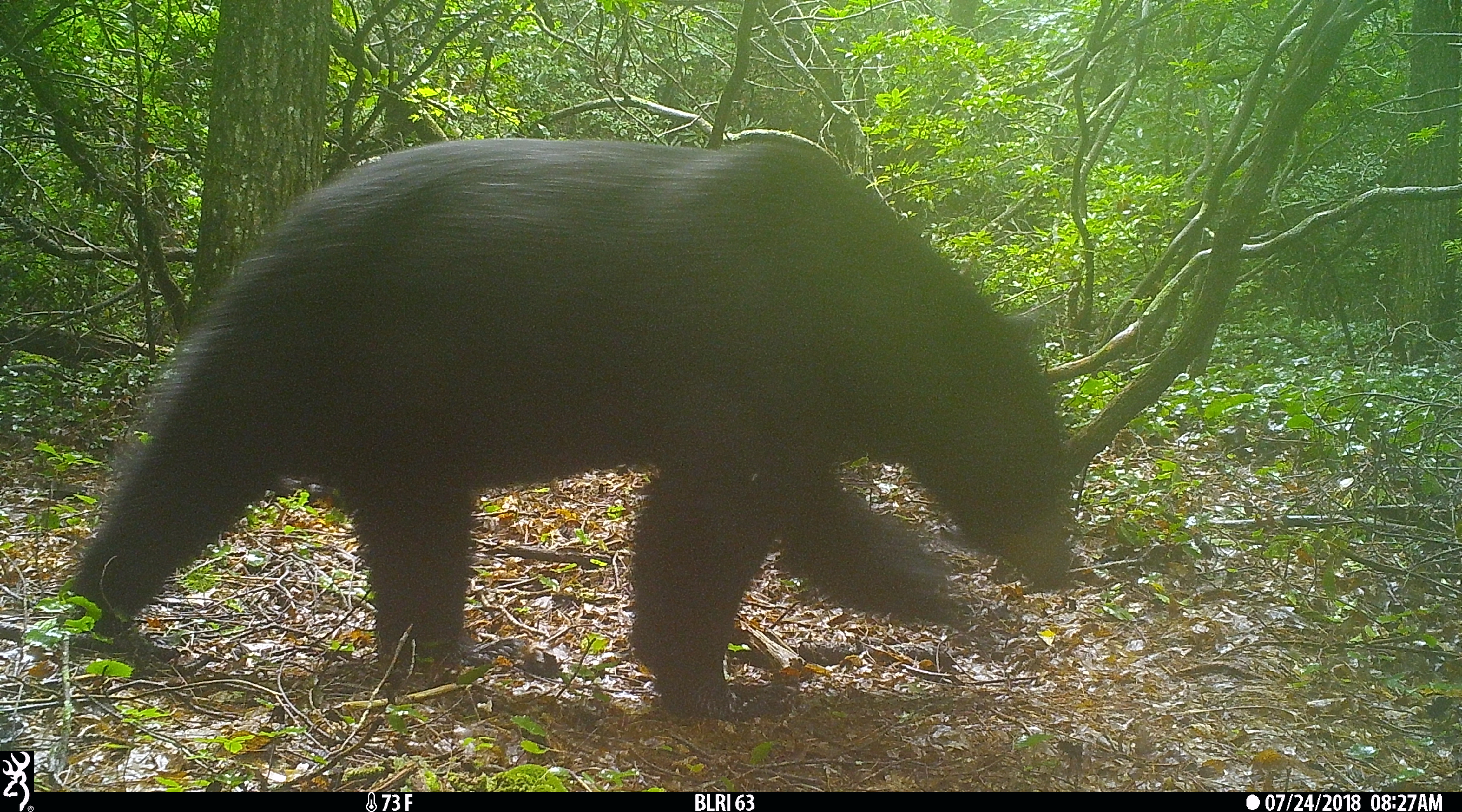Blue Ridge Parkway, NC/VA Wildlife Survey Project
What stalks the Blue Ridge Parkway? Through a project funded by the Blue Ridge Parkway Foundation the National Park Service is trying to determine just that! Using motion sensor cameras, park biologists and a cadre of “citizen scientists” are setting up “camera traps” at locations throughout the 470-mile route of the Blue Ridge Parkway in order to survey medium and large-sized mammals.
The Blue Ridge Parkway runs for nearly 470 miles and connects Shenandoah National Park with the Great Smoky Mountains National Park. The Blue Ridge Parkway extends almost 4 degrees in longitude and 2 ½ degrees in latitude, giving the Parkway the third largest geographic range of any unit in the National Park System. Further, with an annual visitation of over 15 million people, the Parkway is one of the most visited units of the National Park Service in the country.
The Blue Ridge Parkway travels through the heart of the southern Appalachian Mountains—one of the most biologically diverse region’s on the planet! As a result, the Parkway forms a unique transect from which to study biodiversity and the role and impact of people on the regions biological diversity.
Through the use of wildlife cameras, park biologists hope to study not only what animals call the Parkway home, but the role that humans play in influencing wildlife along the Parkway corridor. The cameras will hopefully give us a clearer “picture” of the health of the southern Appalachian ecosystems and habitats along the Parkway.
The Blue Ridge Parkway runs for nearly 470 miles and connects Shenandoah National Park with the Great Smoky Mountains National Park. The Blue Ridge Parkway extends almost 4 degrees in longitude and 2 ½ degrees in latitude, giving the Parkway the third largest geographic range of any unit in the National Park System. Further, with an annual visitation of over 15 million people, the Parkway is one of the most visited units of the National Park Service in the country.
The Blue Ridge Parkway travels through the heart of the southern Appalachian Mountains—one of the most biologically diverse region’s on the planet! As a result, the Parkway forms a unique transect from which to study biodiversity and the role and impact of people on the regions biological diversity.
Through the use of wildlife cameras, park biologists hope to study not only what animals call the Parkway home, but the role that humans play in influencing wildlife along the Parkway corridor. The cameras will hopefully give us a clearer “picture” of the health of the southern Appalachian ecosystems and habitats along the Parkway.

